Terracotta Army
Terracotta Warriors and Horses, terracotta warriors and horses of Qin Shihuang, also referred to as terracotta warriors and horses or terracotta warriors and horses of Qin Dynasty, are the first batch of national key cultural relics protection units and the first batch of Chinese World Heritage Sites, located in the terracotta warriors and horses pit 1.5 kilometers east of Qin Shihuang Mausoleum in Lintong District, Xi'an City, Shaanxi Province.
Terracotta Army is a category of ancient tombs. In ancient times, people died. Slaves were the appendages of slave owners before they died. After the slave owners died, slaves were buried with slave owners as funerary objects. Terracotta Army is a form of sacrificial objects made of soldiers, chariots, horses and soldiers.
In March 4, 1961, Mausoleum of the First Qin Emperor was published by the State Council as the first batch of national key cultural relics protection unit . In March 1974, Terracotta Warriors and Horses were discovered; in 1987, Qinshihuang Mausoleum and Terracotta Warriors and Horses Pit were approved by UNESCO to be included in the World Heritage List, and known as "the eighth wonder of the world". More than 200 foreign heads of state and government visited them successively, which became a gold-lettered business card of Chinese ancient brilliant civilization. It is known as one of the ten greatest treasures in the world.
Human martyrdom is a cruel and barbaric funeral system that sprouted with the collapse of primitive public ownership and prevailed until slavery was established. The most prosperous age of the people was the Shang Dynasty. There were martyrs in the great tomb of the Shang Dynasty. In the Gongling area of Yinxu in Anyang, more than 5,000 people were killed and killed in more than a dozen tombs that have been excavated.
Zhou Dynasty learned the lesson of the tyranny of Yin merchants and emphasized "protecting Germany and protecting the people". The birth and implementation of Zhou Li has greatly restrained the phenomenon of martyrdom, but it has not been eradicated. In the spring and Autumn period, the nations were fighting for hegemony and the times were turbulent. During the Warring States period, all the states of the princes abolished the system of martyrdom. In the first year of the Qin Dynasty (the first 384 years), the "death from death" officially abolished the system of martyrdom.
During the Spring and Autumn Period and the Warring States Period, social changes led to changes in burial customs, which resulted in the use of terracotta figurines and wooden figurines instead of human beings. The original meaning of "figurines" is human death. When human death gradually fades out of people's vision, "figurines" has become a proper term for pottery, stone carvings and human figures in tombs. The Qin Terracotta Army is a typical example of the burial of the figurines. In addition to the wisdom of craftsmen, Qin Shihuang, the first feudal emperor in history, is closely related to the scale and realism of the terracotta warriors.
Records of History: Qin Shihuang Mausoleum was planned and designed by Prime Minister Li Shiyi. General Zhang Han supervised the construction for 39 years. Terracotta Warriors and Horses were made and buried in the burial pit while building Qin Mausoleum.
In the first year of Qin Zi Ying (the first 206 years), Mausoleum of the First Qin Emperor suffered the first or possibly the biggest disaster. According to historical records such as "History of Gaozu Benji" , "Han Shu, Volume 1, Gaodiji No. 1" , "Han Shu, Volume 36, Biography of King Chu Yuanwang No. 6" , Xiang Yu destroyed Qinshihuang Mausoleum on a large scale, ground buildings were destroyed once, and Emperor mausoleums were excavated. Terracotta Warriors and horses were also damaged in the catastrophe. The destruction is serious. Archaeological excavations show that there are black charcoal remains in No. 1 and No. 2 terracotta pits, indicating that the collapse of No. 1 and No. 2 terracotta pits was caused by fire.
In March 1974, while drilling a well in Xiyang Village, Lishan Town, Lintong County, several broken terracotta warriors and horses of the same size as human beings were found, which were fired with earth. After exploration and trial excavation by the Shaanxi Provincial Archaeological Team, the terracotta warriors and horses reappeared.
In July 1974, archaeologists began to excavate the terracotta warriors and horses pit of the Qin Dynasty east of the Qinshihuang Mausoleum in Lintong County, Shaanxi Province.
In December 1987, Mausoleum of the First Qin Emperor and Terracotta Army were listed in the world heritage list.
In June 13, 2009, Mausoleum of the First Qin Emperor Terracotta Army No. 1 pits began the third large-scale excavation.
The shaping of Terracotta Army is basically based on real life, with delicate and bright techniques. Each pottery figure is different in appearance and manner. There are many kinds of hairstyles, gestures are different, facial expressions are different. Judging from their costumes, facial expressions and gestures, they can be judged as officers or soldiers, infantry or cavalry. Generally speaking, all the faces of the Qin figurines show the unique dignity and calmness of the Qin people, with distinct personality and strong characteristics of the times.
Terracotta Warriors and Horses sculpture is a combination of painting and sculpture. Although it has a long history, it is still vaguely visible when the figures'faces and clothes are just excavated. In the techniques, we should pay attention to vivid, ingenious composition, flexible techniques, both authenticity and decoration. Because of this, Qin Terracotta Army occupies an important position in the history of Chinese sculpture. From the more than 1000 terracotta warriors and horses that have been unearthed, there are hardly any similarities.
After the unification of the Six Kingdoms, the Qin State carried out the national conscription system. The source of troops came from all parts of the country. This is probably the main reason why they differed in facial shape, expression and age. Craftsmen use realistic artistic techniques to express them very vividly. In this huge group of Qin figurines, there are many distinct individuals, which makes the whole group more active, real and lively.
Thousands of pottery figurine and Tao Ma have been painstakingly painted. The color of the pottery figurine's face and hands and feet is pink, showing the texture of the muscles. Especially the facial painting is especially wonderful. White eyes, black eyes, and even pupil of the eye are painted vividly. The bun, beard and eyebrow of the pottery figurine are black. The overall color is gorgeous and harmonious. At the same time, the paintings of pottery figurines also pay attention to the contrast of tones, and there are differences between individuals as a whole. Different colors of clothing form a sharp contrast, which enhances the artistic appeal. Tao Ma also has vivid and harmonious coloured drawing, which makes the image of Tao MA in quiescent state more vivid.
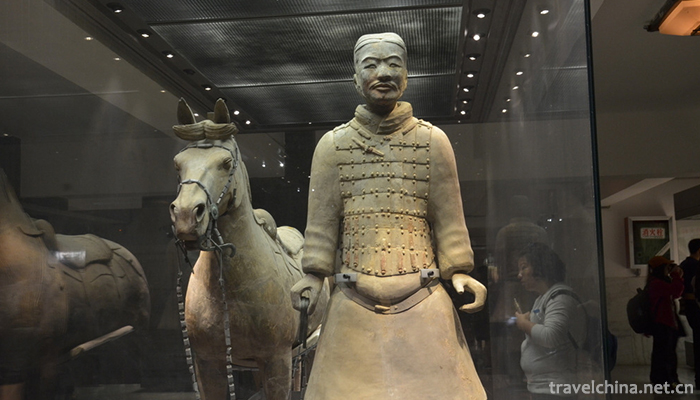
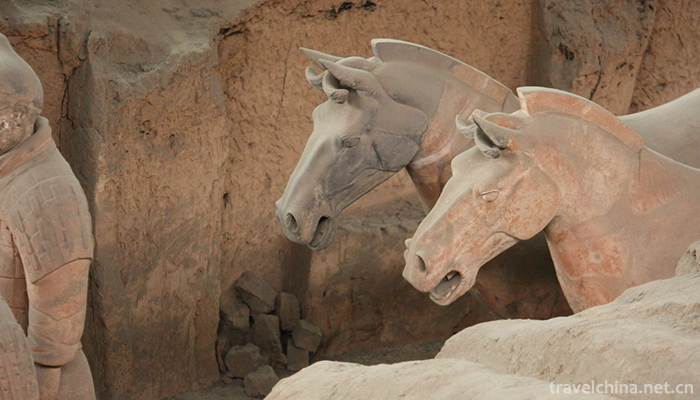
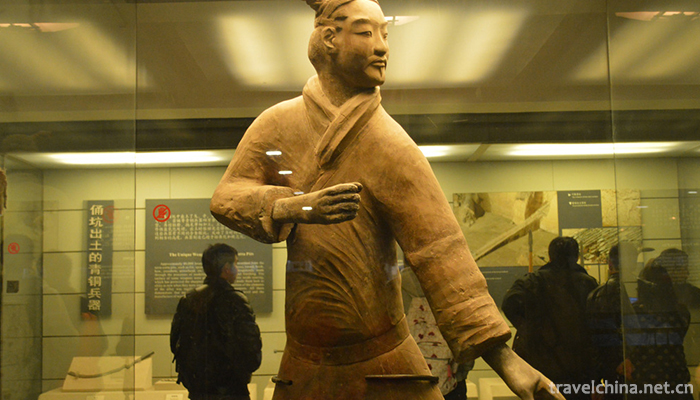
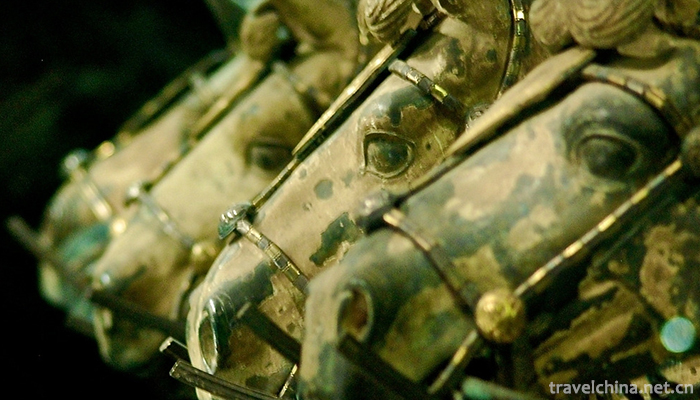
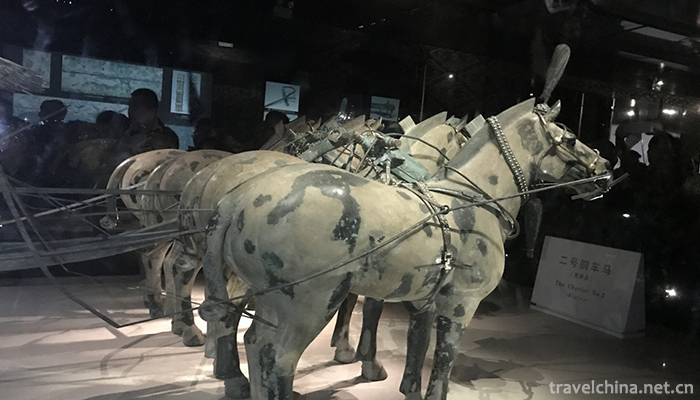
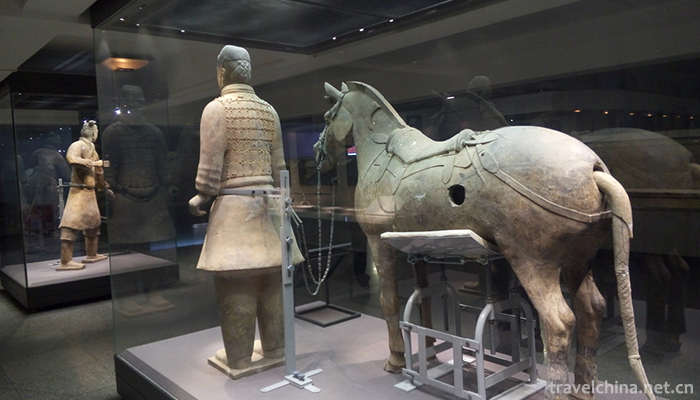
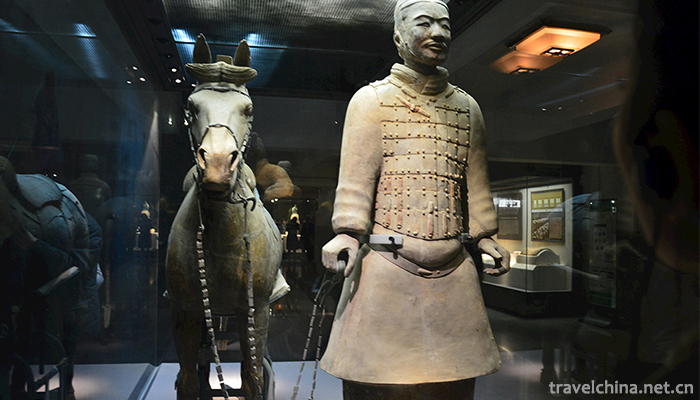
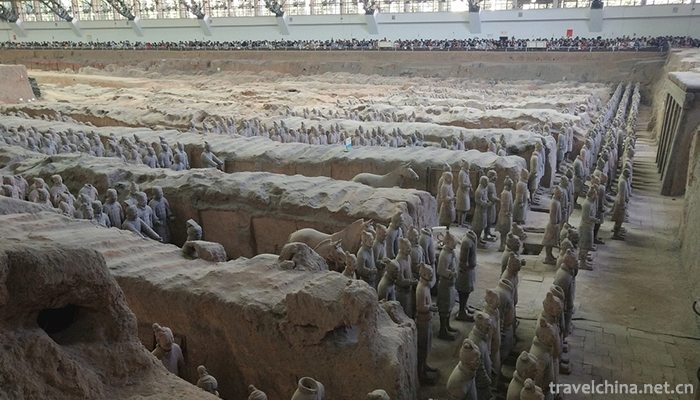

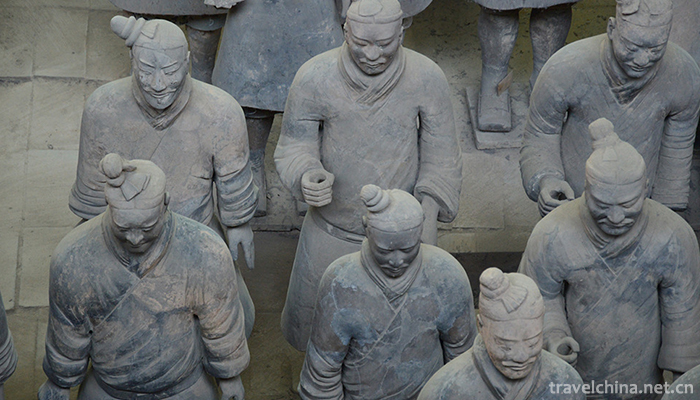
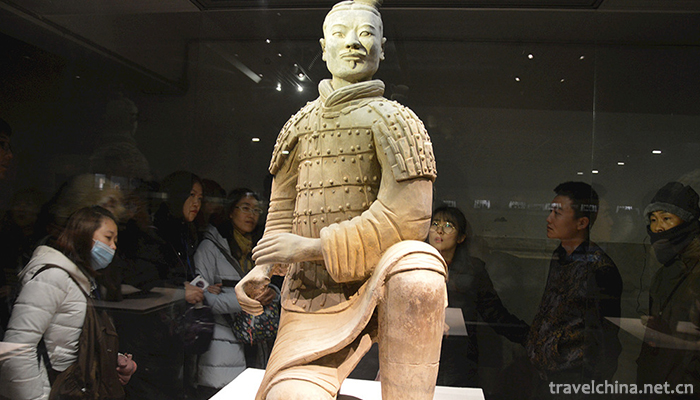
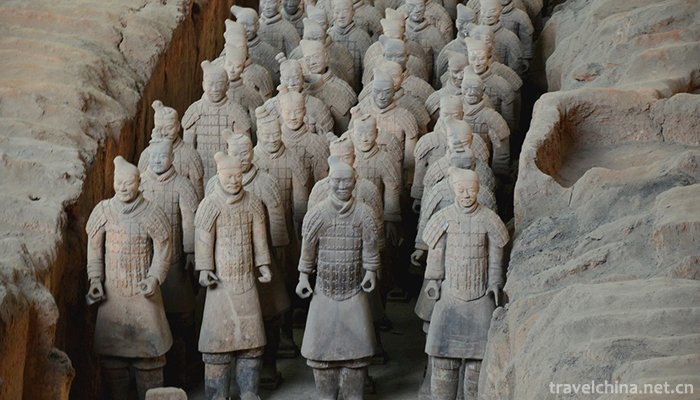
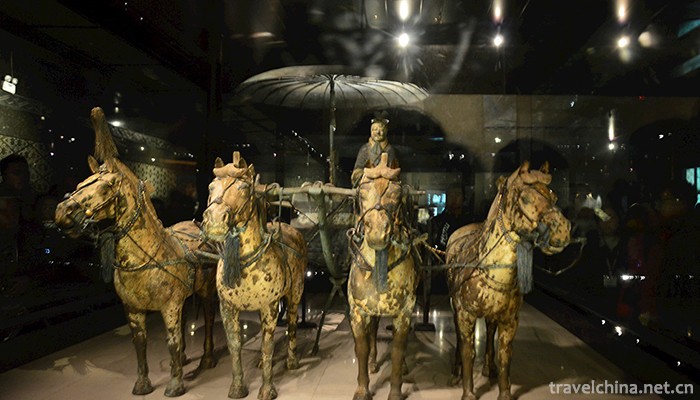
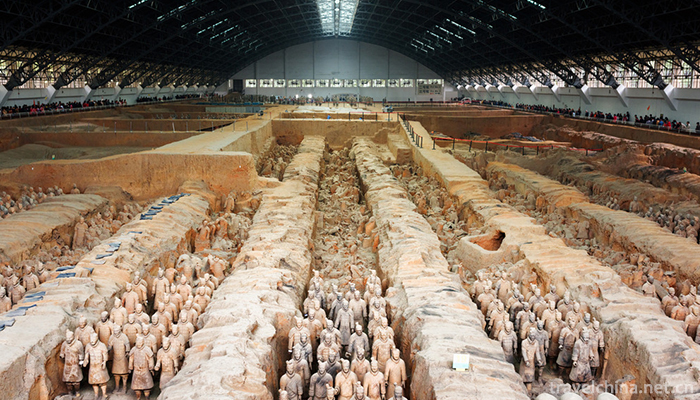
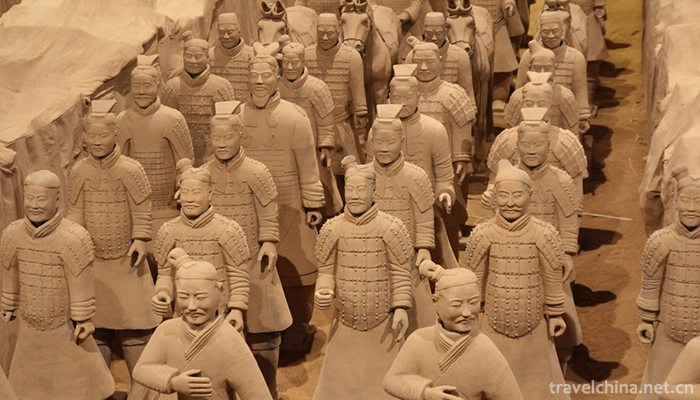
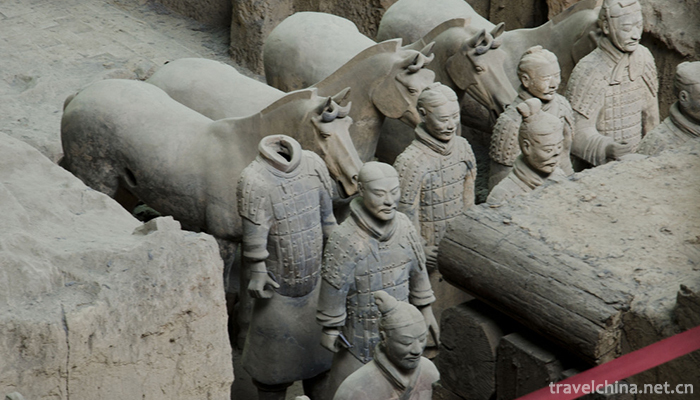
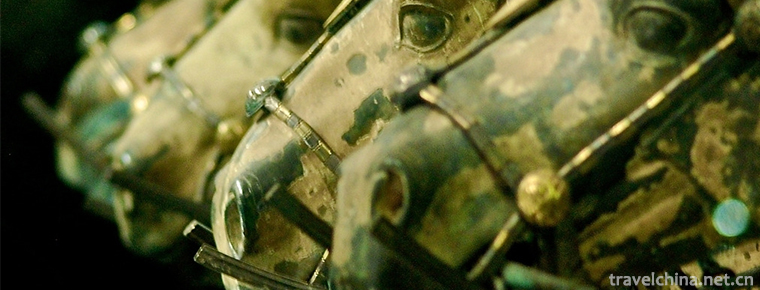
-
1.Libo Zhangjiang Scenic Spot
Libo Zhangjiang Scenic Spot is located in Libo County, Buyi and Miao Autonomous Prefecture, Guizhou Province, with a total area of 118.8 square kilometers. It is composed of big and small Qikong sceni
Time 2018-12-12 -
2.Zhijin cave
Zhijin Cave, located in Guanzhai Miao Township, Zhijin County, Guizhou Province, is located on the South Bank of Liuchong River, one of the sources of Wujiang River, 120 kilometers away from Guiyang,
Time 2019-03-18 -
3.Cangzhou Lazi
Cangzhou Laozi is a traditional folk dance with strong local characteristics in the central area of Hebei Province. Laozi is one of the representative folk dances in Hebei Province.
Time 2019-04-04 -
4.Tibetan Medicine
Tibetan medicine is a bright pearl in the treasure house of Chinese medicine. The Tibetan people living in the snow-covered plateau for generations have accumulated
Time 2019-04-05 -
5.Chentang Sherpa Singing and Dancing
Chen Tang Sherpa Song and Dance is a traditional folk song and dance in the Sherpa community of Tibet. Accompanied by "Zhanlie" (Six Strings) and "Biwang" (Huqin).
Time 2019-04-16 -
6.Gourd sculpture
There are two techniques for carving gourds. One is to use three kinds of special steel needles, large, medium and small, to carve the landscape, flowers and characters in the gourd
Time 2019-05-03 -
7.Wood Watermarking Techniques
Wooden watermarking is mainly made by such basic technological procedures as hook (sub-plate), engraving (plate-making), printing (printing) and special techniques as engraving, picking and dusting.
Time 2019-06-06 -
8.Qingxu Caimen Building
Qingxu Caimen Tower is a local traditional handicraft in Qingxu County, Shanxi Province. Xu Caimen Tower in Qing Dynasty is said to have originated in Tang Dynasty. During the festival, people gathere
Time 2019-06-11 -
9.Taishan Stone Dang Custom
Taishan Stone Dangdang Custom is a relic of ancient people's worship of spiritual stones. Mountain and stone are regarded as personality by myth, which is a typical traditional folk culture that has b
Time 2019-06-18 -
10.Tujia people slip away
Dalaozi is an ancient folk instrumental ensemble which is the most widely spread in Tujia area. It has a long history, a wide range of music cards, exquisite skills and rich expressiveness. It is a un
Time 2019-06-23 -
11.Neijiang population
By the end of 2019, the total population of Neijiang's household registration was 4 million 81 thousand and 800, a decrease of 35 thousand and 900 from the end of last year, of which 2 million 103 thousand and 400 were male and 19 thousand were reduced
Time 2020-12-16 -
12.Administrative division of Dazhou
In 1950, Daxian district was set up, which belongs to the northern Sichuan administrative region. Daxian special office is located in Daxian county and governs eight counties, including Daxian County, Xuanhan County, Kaijiang County, Pingchang
Time 2020-12-20